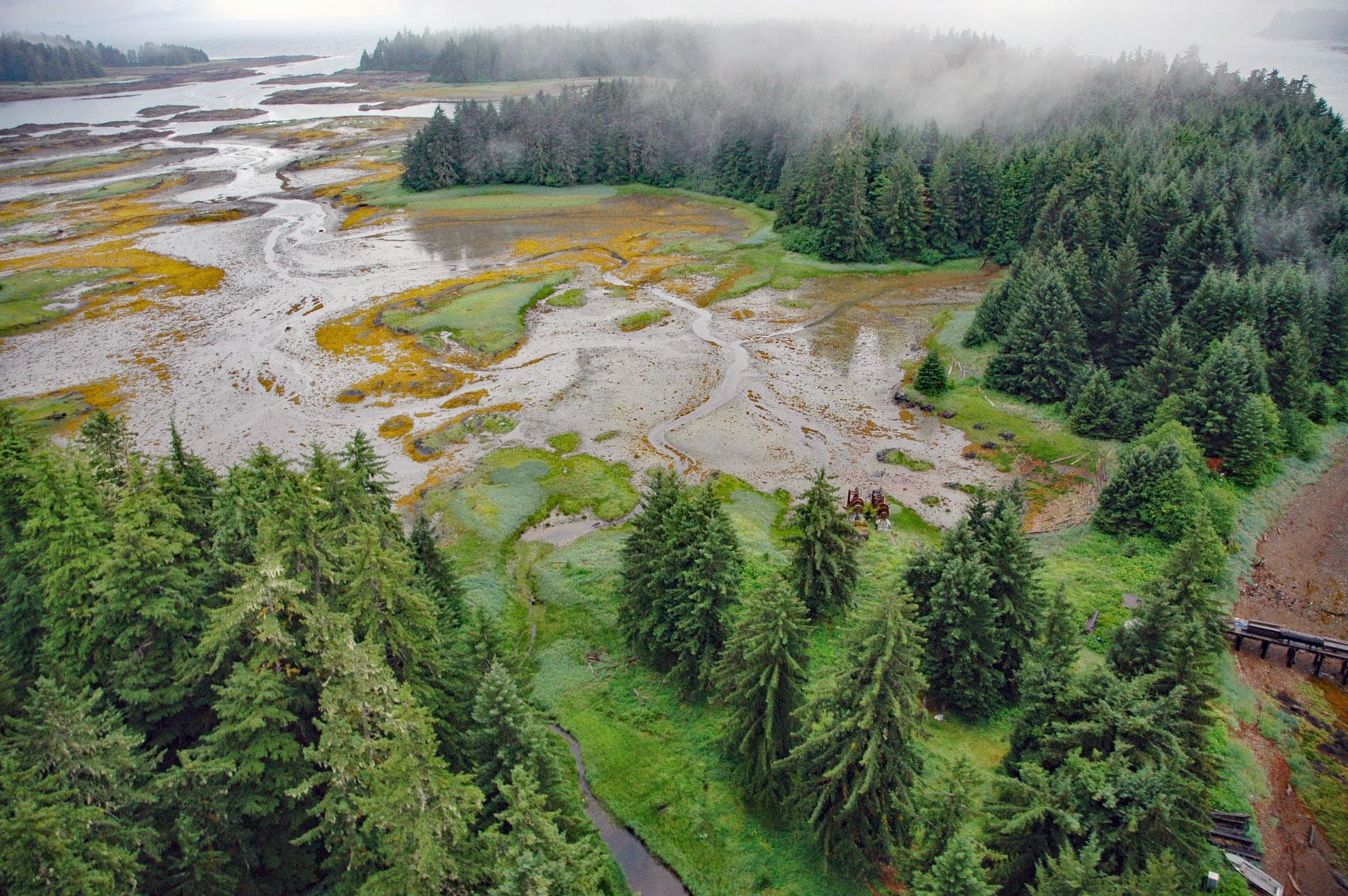Tyee is the site of a historical cannery and shore whaling station in Murder Cove, an embayment about 0.7 miles (1.2 km) across at the southern tip of Admiralty Island, about 24 miles (39 km) west of Kake and 11 miles (18 km) southeast of Baranof, Alaska. It was named by Commander Richard W. Meade of the U.S. Navy in 1869, because according to Meade “traders occasionally anchor here and one small party, while asleep on the beach, were murdered by natives, their boat rifled and bodies left to be destroyed by wild animals”.
Meade was a distinguished veteran of the American Civil War, and his post-Civil War career marked him as one of the Navy’s most prominent reformist and technologically minded officers. Among other positions, he was promoted and served along the Alaskan coast as Commanding Officer of the steamer USS Saginaw. Historical records document the incident referred to by Meade. Two gold prospectors were killed in Murder Cove by Tlingits in 1869 in revenge for the killing of two Kake tribesmen. In retaliation, the USS Saginaw destroyed three Tlingit villages during the Kake War.
The Tyee Whaling Company established the first shore whaling station in Alaska here in 1907. The company had the first American-built steam-powered whale chaser, the Tyee Junior with a length of 97 feet (30 m), whose equipment included a harpoon gun mounted on the bow. Whales were killed, towed to the station, butchered on a ramp, then the blubber was rendered into oil, and the remains ground into dog food or fertilizer. A declining catch and the sinking of the company’s gas-powered schooner by a wounded whale ended the operation in 1913. Read more here and here. Explore more of Murder Cove here:

